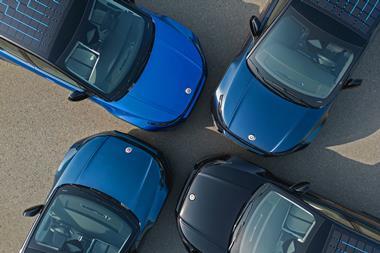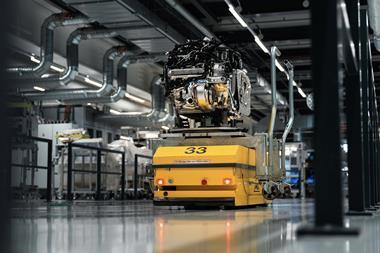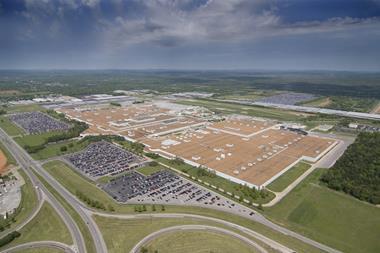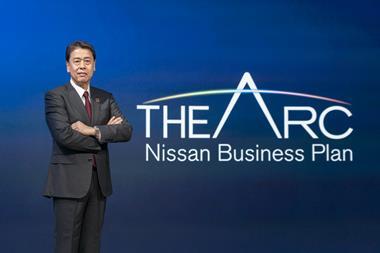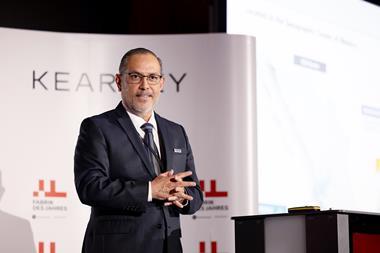Andrew Williams looks at how automotive manufacturers are harnessing renewable energy sources and how benefiting their production operations

In recent years, several of the world’s largest car makers have embarked on high profile initiatives to increase the amount of renewable energy generated at their production sites. One interesting recent example is Nissan, which, in 2016, installed a 4.75MW solar farm – consisting of a total of 19,000 photovoltaic panels – at its Sunderland plant, its largest manufacturing facility in Europe. Solar power generated at the site is used in combination with the output from ten wind turbines already producing renewable energy to help in powering production of the company’s all-electric Leaf model – as well as the batteries used in the vehicle.
Earlier this month, the luxury car manufacturer Bentley also revealed that construction has begun on the UK’s biggest ever solar-powered car port at its headquarters in Crewe. The six month project will entail the installation of 10,000 solar panels – with a combined generation capacity of 2.7MW. As soon as they are up and running, the amount of solar panels at the site will rise to an impressive 30,815.
Volkswagen is another company that has pursued renewable energy generation for some time. It uses electricity generated from renewable sources at least partly at all of its production sites. As a spokesman for the VW brand explained, a total of twelve of these sites are powered completely by renewable energy produced by outside companies. In all, power generated from renewable sources accounted for some 32% of the electricity used by the Volkswagen brand in 2017. For instance, the Emden location – which is supplied by the company’s own VW Kraftwerk GmbH (VWK) – obtained two-thirds of its heat from the local biomass, combined heat and power plant.
In contrast, at its Zwickau facility the company has committed itself to the installation of a gas-fired biomass combined heat and power plant because the dual production of power and heat “represents the most economical alternative and can produce the largest reduction in CO2 emissions – even if no renewable sources are used.” The remaining demand for electricity is covered by purchasing green power from renewable energies, the spokesperson clarified.
At the Wolfsburg location, the site of the largest VW power plant, the company has also decided to build a combined cycle plant that provides most of the electricity to six VWAG locations in western Germany and supplies heat to the location in Wolfsburg and the city itself.
“Our approach to reduced CO2 emissions is to increase energy efficiency first. Every kWh avoided does not have to be produced at all. Depending on the conditions at the location we try to find the most efficient energy supply solution. This might be the use of renewable energy, or investments in high efficient combined heat and power generation, which result in large scale CO2 reductions too,” said Christoph Nieschwietz, head of central energy management, environmental affairs - production at VW.
“For example, we have recently decided to invest in a new gas powered combined cycle plant in Wolfsburg, which will reduce the CO2 emissions from the VWAG – in the six western German production sites – by 50%,” he observed.
Climate protection goals
Although VW has made great strides in the use of renewable energy sources at its sites around the globe, the spokesman revealed that the extent to which they will be used to directly power manufacturing operations will vary from place to place. In his view, the use of decentralised units at a location that directly supplies individual processes “would make sense only on a case-by-case basis.” One example of this would be the provision of heat “at a temperature that differed from the level required by the rest of the heat supply system. In the case of heat recovery in production, the option of directly supplying a neighbouring process is being reviewed as a way of avoiding long delivery distances and addressing users’ needs for a lower temperature level,” said the spokesman.
“In one research project, we are currently examining the use of solar process heat in various regions of the world. The review is considering whether a decentralised connection or central feed-in to the plant network would be more beneficial. As a rule, however, all processes in a group are supplied because fluctuations can be better managed in this way and a redundant supply system can ensure more security and stability,” he added.
Regarding long-term benefits, the spokesman is also clear that the use of renewable energy sources helps the company to achieve the environmental goals it has previously set as part of it ‘Think Blue.Factory.’ initiative - the brand’s environmental programme. By 2025, VW intends to reduce its environmental impact by 45% compared with 2010. Progress towards achieving each of these goals is measured in accordance with five key performance indicators: energy, CO2, waste, water and solvent emissions per produced vehicle or component.
“The achievement of these goals is also broken down into much more detail. Efforts to boost the energy efficiency of production are a long, demanding process. By contrast, the provision of CO2-neutral power is a measure that can also be implemented over the short term,” the spokesman noted. Along with the inherent volatility of renewable energies – and the unavoidable issues associated with around the clock availability – the spokesman also highlighted the fact that the provision of renewable heat “poses a special challenge.”
“This is also the case for CO2-neutral sources of combustion gas that is burned directly in the process. It is impossible to supply all locations with biogas,” he said. “Synthetic gases that are produced with green power in times of excess supply could be a long-term solution here. At the moment, a large number of such solutions do not appear to be economically feasible to us,” he admitted.
Looking ahead, the spokesman said that VW’s new environmental goals envision a “stronger weighting of climate protection goals” – amounting to some 60% less energy and CO2 compared with 40% less waste, water and volatile organic compounds (VOCs).
“The key to enhanced use of renewable energies lies in reduced costs and increased availability, which might be achieved by network systems that combine several technologies, storage capacities and consumer flexibility as will be enabled in the course of digitalisation technologies,” added Liendel Chang, head of environmental affairs - production at Volkswagen Group.
Heat generation
Also in Germany, Porsche is making strong efforts to improve its environmental credentials. Since the beginning of this year, all finished vehicles leaving loading stations at its Kornwestheim and Leipzig sites have been transported by trains powered by renewable energy. The move means that the company’s rail logistics systems are now totally carbon neutral – helping Porsche to reduce the CO2 emissions of its logistics operations by 3% each year, in the process avoiding the production of in excess of 6,000 tons of carbon dioxide.
Another German company that has been very active in establishing renewable energy generation systems at its production plants is Audi, which, within the framework of its environment strategy, claims to be pursuing the vision of completely CO2 neutral car production. The company’s plants in Ingolstadt and Brussels, as well as its high-tech centre in Neuburg and factory in Münchsmünster already use electricity from 100% regenerative sources, mainly from German and Austrian hydroelectric plants. Audi Neckarsulm also uses 50% green electricity and is scheduled to be fully changed over to renewable supply by 2021.
As Rüdiger Recknagel, head of environmental protection and chief environmental officer at Audi, explained, the company is also increasingly relying on its own power generation. He revealed that it has installed large photovoltaic systems at many of its sites, adding up to more than 80,000 sq. m in total. In Ingolstadt alone, over 23,000 square metres of photovoltaic modules produce approximately 1,800 megawatt hours of climate-neutral electricity each year, allowing the company to avoid about 1,000 tons of CO2 emissions.
According to Recknagel, Audi is also using renewable sources for heat generation. For example, at its site in Győr, the company has covered between 60 and 70% of the required heat energy with a geothermal system since 2015. In total, the installation supplies at least 82,000 megawatt hours of thermal energy annually. “Since it went into operation, 170 gigawatt hours of geothermal energy have also been used and CO2 emissions have been reduced by more than 33,000 tons,” Recknagel confirmed.
Process waste heat also plays an important role in the supply of heat energy at the company’s sites. For example, the Ingolstadt and Neuburg sites are supplied with low-CO2 waste heat from nearby industry and, thanks to the heat networks, Recknagel said that Audi “uses around 75,000 megawatt hours of energy per year from waste heat and reduces CO2 emissions by about 16,500 tons.”
“We have set a milestone in Brussels,” he continued. “Since the beginning of 2018, this has been the world’s first certified CO2-neutral large-scale automobile production facility in the premium segment. All processes within the plant and all other emissions arising at the site that are not directly caused by production are either covered by renewable energies such as biogas and green electricity, or offset by environmental projects.”

Balanced approach
Although the renewable energy purchased and produced by Audi is “almost completely used for production at the site,” Recknagel was keen to stress that, while increasing the proportion of renewable energies, the company is “not focusing solely on its sites” with logistics operations “also continuously optimised.” Moreover, all rail transport operated by Audi in Germany has been CO2-free since mid-2017 – and it is the first company in Germany “to handle its logistics transport by rail in a completely climate-neutral manner by using green electricity.”
“As a result, we reduce CO2 emissions by more than 13,000 tons per year and achieve an important milestone on the way to CO2-neutral production,” he said. In Recknagel’s view, renewable energy is a key element for more climate protection and is ‘essential’ for a balanced environmental approach, particularly since it allows the company to have an active positive effect on its cars’ CO2 footprint before they reach the roads. With the ongoing electrification of the drive system, Recknagel also argued that cars will be able to drive “completely CO2-neutral in the future” – with emissions “mainly attributable to the production phase and the supply chain.” Because emissions related to the production phase will be weighted more strongly due to electrification, he believes the importance of renewable energies in automobile production “will continue to increase in the future.”
Despite the obvious advantages, Recknagel admitted that a number of challenges related to the switch to renewable energy still remain. From a business perspective, he points out that changing over to renewable energy systems involves “a great deal of technical effort and financial investment and can only be carried out step by step.” Generally speaking, he also stresses that security of supply in vehicle production has ‘top priority’ – meaning that sufficient energy must always be available “even if the sun is not shining or no wind is blowing. The volatility of renewable energies, with fluctuations related to the weather, the season of the year and the time of day, make energy-storage systems essential,” he concluded.
























